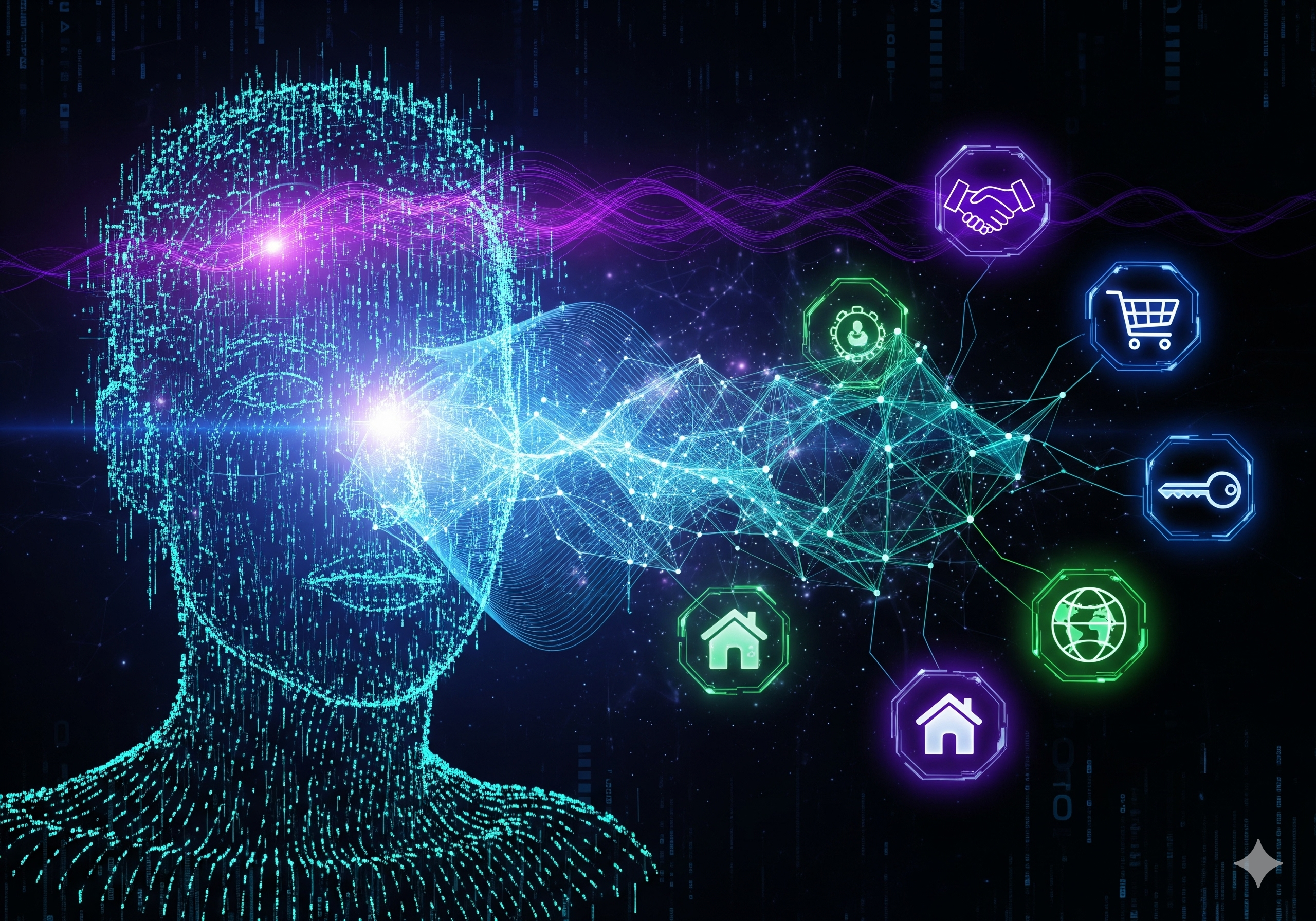Remember the last time you needed to prove who you are? Maybe you opened a bank account, rented a car, or crossed a national border. In each instance, you likely presented a physical document—a driver’s license, a passport, or a birth certificate. These physical pieces of paper have been our “passports” to social and economic participation for centuries, universally accepted as proof of identity.
But what happens when more and more of our lives exist in the digital realm? When we apply for a loan online, interact with government services through an app, or participate in a decentralized autonomous organization (DAO) in the metaverse, how do we establish trust and verify who we are? The old physical documents, designed for an analog world, simply aren’t enough. A new paradigm is emerging, one where our identity is not just digital, but actively functions as our passport to the future. This is the central question we will explore: Why digital identity could be the new social passport?
This article will delve into the profound shift happening in how we prove who we are in the 21st century. We’ll explore the technologies, the challenges, and the immense potential of a robust digital identity system—one that is secure, private, and gives us more control over our personal data than ever before. We will show you how digital identity is not just about logging into an app, but about unlocking access to a truly global, interconnected, and trustless society.
The Background and Context: A Legacy of Proving Who We Are
For centuries, establishing identity was a relatively straightforward affair, largely tied to physical presence and official documents. Your birth certificate proved your existence, your driver’s license confirmed your ability to operate a vehicle and often served as general ID, and your passport opened doors to other nations. These documents were issued by centralized authorities—governments—and relied on their trusted seals for legitimacy.
The internet, however, threw a massive wrench into this system. Suddenly, we were interacting with strangers across vast distances, with no physical presence to verify. Our “digital identity” became a fragmented, insecure mess: a collection of usernames, passwords, and profiles scattered across countless websites and services.
This fragmented digital identity created several critical problems:
- Security Vulnerabilities: Every new login and password combination is a potential point of failure, leading to data breaches, identity theft, and endless frustration.
- Privacy Concerns: Companies collect vast amounts of our personal data, often without our full understanding or consent, creating detailed profiles that are bought and sold.
- Lack of Control: We have little agency over how our digital information is used, shared, or even whether it’s accurate.
- Exclusion: Billions of people globally lack foundational legal identity documents, preventing them from accessing essential services like banking, healthcare, or education. The digital world often replicates this exclusion.
The existing system is clearly broken. It was not built for a world where our social and economic interactions are increasingly mediated by algorithms and distributed networks. The need for a more secure, private, and user-centric approach to digital identity has become one of the most pressing challenges of our time. This is where the concept of a “digital social passport” comes in. It’s not just about a single login; it’s about a comprehensive, verifiable, and user-controlled identity that empowers individuals in the digital age.
Detailed Comparison: Traditional vs. Digital Identity
To grasp the revolutionary potential of a robust digital identity, let’s compare it to the traditional, physical identity systems we’ve relied on for so long.
| Feature | Traditional (Physical) Identity | Future Digital Identity (Self-Sovereign Model) |
| Proof of Identity | Physical documents (passport, driver’s license, birth certificate). Issued by centralized authorities. | Verifiable Digital Credentials (VDCs). Cryptographically secured, issued by trusted entities, and stored by the individual. |
| Control & Ownership | Limited. Governments issue and control the primary documents. You carry them, but you don’t truly “own” the underlying data. | Self-Sovereign. You own and control your digital identifiers and credentials. You choose who sees what information. |
| Privacy | All-or-nothing. When presenting a physical ID, you often reveal more information than necessary (e.g., your birth date when verifying age). | Selective Disclosure. You can share only the specific piece of information required, minimizing data leakage. (e.g., “I am over 18” without revealing your exact birth date). |
| Security | Vulnerable to physical loss, forgery, and centralized database hacks. One document can lead to full identity theft. | Enhanced. Cryptography, blockchain, and decentralized storage reduce single points of failure. Biometrics add layers of security. |
| Accessibility | Excludes billions. Many cannot obtain traditional IDs due to lack of birth registration, cost, or geopolitical factors. | Inclusive Potential. Can be designed for universal access, offering secure identities to those currently excluded from formal systems. |
| Verification Speed | Manual/Visual. Requires human inspection, can be slow and prone to error. | Instantaneous. Automated and cryptographic verification, reducing friction and speeding up processes. |
Export to Sheets
This comparison highlights a dramatic shift in paradigm. Traditional identity is about external validation and limited control. Future digital identity, particularly the self-sovereign model, is about individual empowerment, granular control over personal data, and a far more secure and efficient way to navigate an increasingly digital world.
Key Features & Benefits of a Robust Digital Identity
A well-designed digital identity system offers a multitude of advantages that go far beyond mere convenience.
1. Enhanced Privacy Through Selective Disclosure
One of the most revolutionary aspects of advanced digital identity is the ability to share only the necessary information, and no more. Instead of showing your entire driver’s license to prove you’re over 21, a verifiable digital credential could simply confirm “Age Verified: Yes.” This minimizes the exposure of personal data and protects you from unnecessary data collection.
2. Stronger Security & Fraud Prevention
By leveraging cryptography, blockchain technology, and multi-factor authentication (including biometrics), digital identities are significantly harder to forge or compromise than physical documents or simple username/password combinations. This drastically reduces identity theft and online fraud.
3. Universal Accessibility & Financial Inclusion
For the billions of people worldwide who lack official government IDs, a digital identity system offers a pathway to inclusion. It can provide a verifiable identity that unlocks access to banking, education, healthcare, and humanitarian aid, bridging the gap between the formally identified and the invisible.
4. Streamlined User Experience & Reduced Friction
Imagine opening a new bank account, renting an apartment, or signing up for a new online service with just a few clicks, knowing your identity is instantly and securely verified. Digital identity removes the tedious paperwork, long waits, and repetitive data entry that plague our current systems.
5. Empowering the Individual with Data Control
At its core, a robust digital identity system gives individuals sovereignty over their own data. Instead of companies owning and monetizing your information, you decide who gets access to what, when, and for how long. This paradigm shift could fundamentally alter the relationship between individuals and the digital platforms they use.
Pros and Cons of Digital Identity as a Social Passport
While the promise of digital identity is vast, its implementation comes with significant challenges and potential pitfalls that must be carefully navigated.
Pros:
- Convenience: Fast and seamless access to services online and offline.
- Security: Reduces fraud, identity theft, and simplifies authentication processes.
- Privacy: Enables selective disclosure, giving users control over their data.
- Inclusion: Potentially provides identity to underserved populations.
- Efficiency: Automates verification, reducing administrative burdens for businesses and governments.
Cons:
- Digital Divide: Access to technology (smartphones, internet) is still uneven, potentially excluding those who need it most.
- Privacy vs. Surveillance: The same technology that enables privacy can, if misused by powerful entities, also enable unprecedented surveillance.
- Centralization Risk: If a digital identity system becomes too centralized (e.g., controlled by a single government or corporation), it could become a tool for control and censorship.
- Technical Complexity & Adoption: Widespread adoption requires overcoming significant technical hurdles and user education.
- Ethical Concerns: Questions around identity for minors, the right to anonymity, and how to handle erroneous data.
Use Cases: Who Needs a Digital Social Passport?
The applications for a robust digital identity system are virtually limitless, impacting almost every aspect of our lives.
- Financial Services: Opening bank accounts, securing loans, cross-border payments, and cryptocurrency transactions can all be streamlined and secured with verifiable digital identities, reducing fraud and increasing trust.
- Healthcare: Securely accessing medical records, receiving telehealth services, and managing prescriptions become safer and more efficient. It also ensures privacy by only revealing necessary health data.
- Government Services: Seamless access to social benefits, tax filings, voting, and permits. This can significantly reduce bureaucracy and make government more accessible and efficient for citizens.
- E-commerce & Online Services: Faster sign-ups, secure transactions, age verification, and personalized experiences without oversharing data. This builds trust between consumers and online platforms.
- Web3 & Metaverse: In decentralized environments like the metaverse, digital identity will be crucial for establishing reputation, ownership of digital assets (NFTs), and ensuring genuine participation in DAOs. It’s the key to building trust in trustless systems.
FAQs: Navigating the Future of Digital Identity
What is “Self-Sovereign Identity” (SSI)?
Self-Sovereign Identity (SSI) is a model where individuals have complete control over their digital identities. Instead of relying on a centralized authority (like Google or a government) to manage your identity, you create, own, and manage your own digital identifiers and verifiable credentials. You decide who you share information with and when.
Is digital identity primarily for online use?
While its immediate impact is most felt online, digital identity is increasingly being designed for “phygital” (physical + digital) use cases. This means using your smartphone or another device to securely verify your identity in person, replacing physical documents.
How does blockchain fit into digital identity?
Blockchain technology can be used to anchor verifiable credentials, providing an immutable and transparent record of issuance and revocation. This adds a layer of trust and security, as the credentials cannot be easily tampered with or forged.
What about the privacy concerns if everything is digital?
Paradoxically, well-designed digital identity systems can enhance privacy. By enabling selective disclosure (sharing only the minimum necessary information), cryptographic security, and user control, these systems can offer more privacy than current fragmented systems where companies collect vast amounts of unnecessary data.
Is a global digital identity possible or desirable?
A single, global digital identity that everyone uses might raise significant concerns about surveillance and centralized control. However, a network of interoperable digital identity systems that respect national sovereignty and individual control is highly desirable. This would allow seamless, trusted interactions across borders and platforms without a single point of control.
Conclusion: The Final Verdict on Digital Identity
The journey from physical documents to a truly decentralized, user-controlled digital identity is not just an technological upgrade; it’s a societal evolution. The question of Why Digital Identity Could Be the New Social Passport? is no longer a futuristic speculation, but an unfolding reality.
As our lives become increasingly digital, our ability to prove who we are—securely, privately, and conveniently—will become the bedrock of participation in society. It will be our passport to accessing essential services, engaging in commerce, participating in governance, and building trust in a globalized world.
The final verdict is a powerful call to action: we must build these digital identity systems thoughtfully, with privacy, security, and individual empowerment at their core. If we get it right, digital identity will not just be a new form of identification; it will be a foundational layer for a more inclusive, secure, and democratic digital future. It’s time to reclaim ownership of who we are, online and off.







Leave a Reply